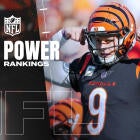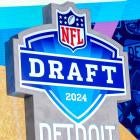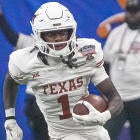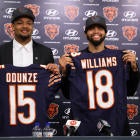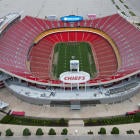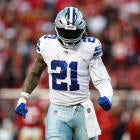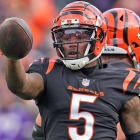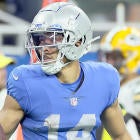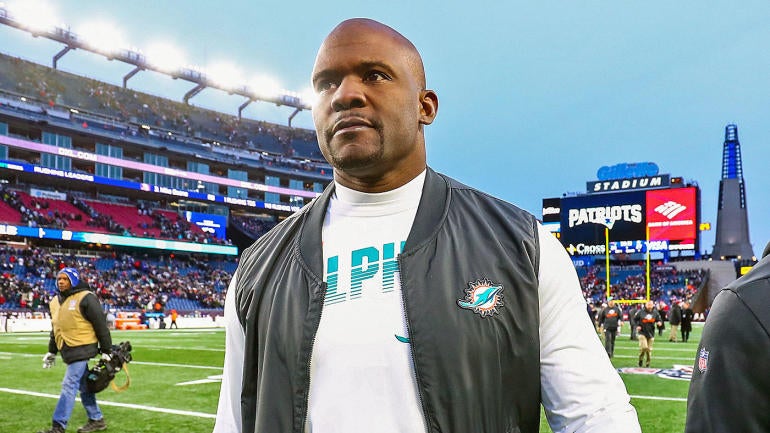
Last season, nobody expected anything from the Miami Dolphins. Everyone in and around the football world thought the team was Tanking for Tua, and that was that. They started off the year looking like exactly as dreadful a team as many predicted, losing their four pre-bye games by a cumulative score of 163-26. They lost three more before securing their first win in Week 9, but the truth is their turnaround began immediately after the bye. In their final 12 games of the season, the Dolphins went 5-7 and were outscored only 331-280. They went from historically bad to slightly below average, and they did it pretty quickly, and with very little turnover of the roster.
The Dolphins didn't end up with the first overall pick, but they did end up with Tua Tagovailoa on their roster, securing him with the No. 5 pick in the 2020 NFL Draft. But while Tua -- now starting after taking over for Ryan Fitzpatrick -- holds the key to the team's future, the more important present-day moves the Dolphins made during the 2020 offseason came on the other side of the ball. As we wrote in the early days of free agency:
Adding [Byron] Jones is a coup for the Dolphins, who now have one of the best cornerback duos in the NFL. Brian Flores appears to be emulating his former boss, Bill Belichick, in highly valuing shutdown corners as the basis of a top-flight defense. Jones is an incredible athlete with great size and length, which should allow him to excel in the man coverage schemes Flores favors. He played a lot of zone in Dallas, though, and should do just fine if the Dolphins want him to play that way as well. With two premier cornerbacks (Jones and Xavien Howard), Flores can have them play sides or use one or both to shadow receivers on the opposing team, allowing for more creativity in designing his coverage schemes.
The Dolphins spent a decent chunk of change to make some upgrades up front, landing Emmanuel Ogbah and Shaq Lawson on sizable deals, but the key piece in the remaking of the team's front seven is [Kyle] Van Noy. Miscast as something resembling a pure middle linebacker in Detroit, Van Noy found a home in New England as a flexible piece able to do a bit of whatever Belichick asked of him. (Though he played almost exclusively on the edge last season.) He should operate similarly in Miami, moving all over the formation and working as a traditional linebacker, edge rusher, and occasional interior lineman.
But the Dolphins weren't done there. They continued shopping throughout the free agency period, then added even more defensive talent in the draft. Here's what we wrote about Miami when all the player-acquisition was finished, in our series detailing each team's most interesting offseason additions:
Miami splashed the pot in free agency, handing $178.5 million worth of contracts to Byron Jones, Kyle Van Noy, Shaq Lawson, and Emmanuel Ogbah, plus signing Clayton Fejedelem, Elandon Roberts, Kamu Grugier-Hill, and Kavon Frazier, and drafting Noah Igbinoghene, Raekwon Davis, Brandon Jones, Curtis Weaver, and Jason Strowbridge. That is a lot of talent to add in one offseason.
In particular, there is reason to feel good about Miami's secondary, with Jones and Igbinoghene joining Xavien Howard to form what should be one of the league's best cornerback units. Head coach Brian Flores came to Miami from New England and knows how to utilize a versatile defender like Van Noy, and is used to generating a pass rush without a single dominant edge rusher, and should be able to utilize Lawson and Ogbah in ways to accentuate their strengths and minimize their weaknesses. Miami is not nearly the favorite in the AFC East, but if the sheer volume of talent added on defense can coalesce into a unit in or near the top 10, perhaps the Dolphins can surprise and challenge for the new No. 7 seed in the conference.
That may have seemed a bit pie-in-the-sky at the time, but seven games into their season, the Dolphins are allowing just 18.6 points per contest, the single best mark in the entire league. They rank a very solid 11th in Football Outsiders' defensive DVOA, with the NFL's third-ranked unit against the pass. They're 4-3 at nearly the midway point of the 2020 campaign, putting them firmly in the mix for a playoff spot.
And while the Ryan Fitzpatrick-led offense played above expectations early on, the past few games (since Jones returned from his injury in Week 5) have hammered home that this is a team carried by its defense. The personnel changes have largely worked exactly as intended, allowing Flores to deploy players far more aggressively than he did last year, mixing up coverages along the way. Take a look at the table below, which shows the difference between Miami's coverage usage this year and last. (Via Pro Football Focus and Tru Media)
| Year | 2019 | 2020 |
|---|---|---|
| Cover-3 | 30.2% | 37.5% |
| Cover-1 | 47.0% | 35.3% |
| Cover-0 | 5.5% | 16.3% |
| Cover-2 | 8.4% | 1.0% |
| 2-Man | 2.6% | 1.3% |
The Dolphins have dramatically ramped up their usage of Cover-0 this season, indicating that they have been far more willing to send the house after the quarterback and trust that their cornerbacks will be able to handle themselves on the back end. So far, that trust has been paid off. In 2019, opposing passers completed 12 of 20 passes for 202 yards, five touchdowns, and just one interception against the Dolphins when they played Cover-0, per PFF and Tru Media. That's a 112.9 passer rating. This year, though, the Dolphins have already played more snaps in Cover-0 than they did a year ago, and passers are just 22 of 42 for 104 yards, zero touchdowns, and three picks against them -- a 28.5 passer rating. That's not a typo.
Flores is selective about deploying his all-out blitzes, just as he is with blitzing in general. The Dolphins have sent at least one extra rusher after the quarterback on 35.3 percent of opponent dropbacks, per PFF and Tru Media, a figure that is solidly above the league average of 28.3 percent but not close to, say, the Ravens' 41.6 percent rate, or the Steelers' 43.8 percent mark. They save those blitzes, though, for opportune times. Take last week's win over the Rams, for example.
The Dolphins sent a blitz after Jared Goff on 51 percent of his shotgun snaps, a rate that far exceeds their normal blitz share. Why'd they do that? Well, because the Rams pass the ball 89 percent of the time they're in shotgun, per PFF and Tru Media. The Dolphins knew that went the Rams went to the gun, it was almost certain to be a pass. So they sent large numbers after the quarterback and forced him to make quick decisions. It did not go well for L.A.
Flores and the Dolphins showed similar knowledge against the Jets, 49ers, and Patriots. They flashed a double B-gap blitz against New York before dropping one defender out and leaving a guard blocking nobody while the other blitzer got to the quarterback. They showed San Francisco a mugged up front with eight men across the line of scrimmage, made it look like they were sending everybody, then had two guys drop back into coverage, and they got a sack because nobody blocked one of the actual blitzers, who came right up the middle. And they exploited the Patriots' tendency to pull their guards on play-action passes from under center by sending a blitzer right through the gap the guard had just vacated, getting an easy sack on Cam Newton.
About that mug look the Dolphins used a few times in the clip above: Flores (much like Belichick) absolutely LOVES that. The Dolphins might use it more than any team in the league. It works so well because it's so easy to disguise who is and isn't coming after the quarterback, and to adjust your plan if the quarterback identifies the correct rushers and adjusts his protection pre-snap. Last week against the Rams, the Dolphins absolutely drove Goff crazy with these looks. He had no prayer, throwing the ball to ghosts, into the ground, or into the arms of waiting defenders. (I threw in a free sack of Joe Flacco in the video below. Enjoy.)
Also against L.A. (this was just a really good defensive game for Miami), the Dolphins combined those two traits into one play, using a mugged up look and knowledge of the Rams' tendencies to get themselves a strip-sack that resulted in a touchdown. Pay attention to the edge rusher off the left side of the formation, No. 91, Emmanuel Ogbah. The Rams leave him unblocked, instead trying to hold him on the edge by using jet motion. But the Dolphins, much like the Patriots did in their Super Bowl victory over the Rams, just ignored all the window dressing of the Rams' offense. Seriously, watch Ogbah in the clip below. He doesn't even react to the presence of Darrell Henderson jetting across the formation. Instead, he just goes right after Goff.
Another way the Dolphins can attack opposing offenses with this look is to flash one of those mugged up linebacker blitzes up the middle, only to drop out of it and send a corner from the opposite slot instead. They fooled the Rams badly with that scheme a couple times, but they got Russell Wilson and the Seahawks with it as well.
The Dolphins' improved personnel is what's allowing them to execute all of these schemes, but the real star here is Flores. It's his design, his knowledge of tendencies and rules of opposing offenses and protection schemes, and his coaching that is putting these players in position to succeed. You don't see plays like that strip-sack against the Rams without having it drilled into players' minds that they should not pay attention to that type of fluff. That's Flores.
Last year, everyone thought the Dolphins would be tanking. At first, it looked like they were. Slowly but surely, though, Flores got through to that team, and they started to get better. With a better roster, that's happening much more quickly this year. The Dolphins may not make the playoffs this season, but they have a bright future. They've got a good young defense and a great young coach that can carry them until their great young quarterback is ready to reach his full potential.














